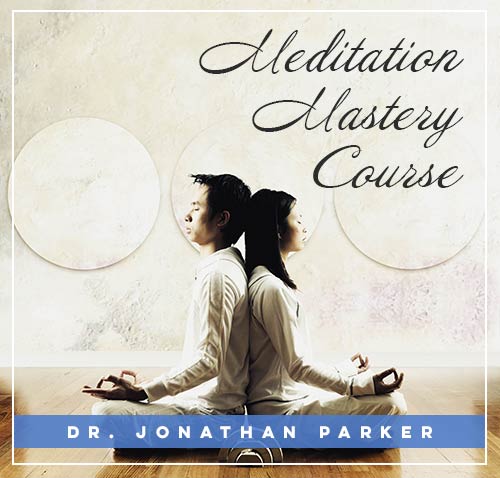Breathing Techniques in Meditation

Looking for more amazing products? Check out our online store and explore our collection here! Happy shopping!
Before diving in, please note: This post is for informational purposes only. If you’d like to know more about how we approach topics, feel free to check out our friendly Disclaimer Page.
Hey there, amazing readers! 
We’re committed to delivering quality posts, and your support (even just sticking around despite the ads) means everything to us. So, bear with us, and thanks for helping us keep the good vibes rolling. Now, on to the fun stuff!
TRANSLATE BUTTON AT THE END OF THE ARTICLE
Introduction to Breathing Techniques in Meditation
In the realm of meditation, breathing techniques play a fundamental role in enhancing the practice and deepening the connection between mind and body.
Proper breathing is not only essential for physical well-being but also crucial for achieving a state of mental clarity and relaxation.
Incorporating breath work into meditation can help individuals navigate the complexities of their inner world and unlock the secrets of mindfulness.
By mastering different breathing techniques, practitioners can unravel the potential benefits of meditation and cultivate a deeper sense of presence and focus.
Importance of Proper Breathing in Meditation
Proper breathing in meditation is like the anchor that keeps the ship steady amidst the ever-changing tides of thoughts and emotions.
It underpins the practice, providing a stable foundation for exploring the depths of one’s consciousness.
By paying attention to the breath, individuals can tune into the present moment and let go of distractions that may arise during meditation.
Moreover, breathing correctly can help regulate the body’s stress response, promoting a sense of calm and relaxation that is essential for a successful meditation session.
Benefits of Incorporating Breath Work in Practice
Incorporating breath work into meditation practice offers a myriad of benefits that extend beyond the cushion.
From reducing stress and anxiety to improving focus and concentration, mastering breathing techniques can have a transformative impact on one’s overall well-being.
By cultivating awareness of the breath, individuals can tap into the body’s natural ability to heal and restore balance.
Breath work can also enhance the mind-body connection, fostering a greater sense of unity and harmony within oneself.
Understanding the Connection Between Breath and Mind
The connection between breath and mind is profound and intricate, with each influencing the other in a delicate dance of rhythm and energy.
When we breathe consciously and with intention, we signal to the mind that it is time to focus and be present.
As the breath deepens and slows, the mind follows suit, entering a state of calm and clarity.
By harnessing the power of the breath, individuals can navigate the complexities of their thoughts and emotions, leading to a more peaceful and centered state of being.
Different Breathing Techniques for Meditation
There are numerous breathing techniques that can be incorporated into meditation practice, each offering its own set of benefits and effects on the mind and body.
From deep breathing to diaphragmatic breathing, practitioners can explore a variety of methods to find the one that resonates most with them.
By experimenting with different techniques, individuals can uncover new ways to enhance their meditation experience and deepen their practice.
Deep Breathing: A Fundamental Meditation Technique
Deep breathing is a fundamental meditation technique that involves taking slow, deliberate breaths to calm the mind and relax the body.
By focusing on the sensation of the breath as it enters and leaves the body, individuals can cultivate a sense of presence and mindfulness.
Deep breathing can also help alleviate feelings of anxiety and tension, promoting a state of inner peace and tranquility.
This technique is especially effective for beginners looking to establish a strong foundation for their meditation practice.
Diaphragmatic Breathing for Relaxation and Focus
Diaphragmatic breathing, also known as belly breathing, involves expanding the diaphragm to allow for deeper, more efficient breaths.
This technique can help individuals relax and center themselves, as it activates the body’s relaxation response.
By breathing deeply into the belly, practitioners can increase oxygen flow to the brain, improving focus and mental clarity.
Diaphragmatic breathing is particularly beneficial for those looking to reduce stress and enhance their overall well-being through meditation.
Nadi Shodhana: Balancing the Breath for Harmony
Nadi Shodhana, or alternate nostril breathing, is a powerful breathing technique that aims to balance the flow of energy in the body.
By alternating between the left and right nostrils, practitioners can harmonize the body’s subtle energy channels, known as nadis.
This technique can help clear the mind, improve concentration, and create a sense of inner balance and harmony.
Nadi Shodhana is a popular practice in yoga and meditation, valued for its ability to calm the mind and promote overall well-being.
Counting Breath: A Simple but Effective Method
Counting breath is a simple yet effective method for cultivating awareness and focus during meditation.
By silently counting each inhale and exhale, individuals can anchor their attention to the breath and quiet the mind.
This technique can help prevent distractions and wandering thoughts, allowing practitioners to stay present and centered.
Counting breath is an excellent practice for beginners or anyone looking to enhance their concentration and deepen their meditation experience.
Guided Visualization with Breath Awareness
Guided visualization with breath awareness combines the power of imagination and breath work to create a deeply relaxing and transformative meditation experience.
By visualizing peaceful scenes or positive affirmations while focusing on the breath, individuals can enter a state of profound relaxation and inner peace.
This technique can help reduce stress, increase self-awareness, and promote a sense of well-being.
Guided visualization with breath awareness is a creative and engaging way to enhance meditation practice and tap into the power of the mind.
Incorporating Breath Retention in Meditation Practice
Breath retention, or kumbhaka, is a technique that involves holding the breath for a short period of time during meditation.
This practice can help build lung capacity, increase oxygen levels in the body, and promote a sense of calm and focus.
By incorporating breath retention into meditation practice, individuals can deepen their breath work and explore new dimensions of mindfulness.
This technique should be practiced with caution and under the guidance of a qualified instructor to ensure safety and effectiveness.
Tips for Mastering Breathing Techniques in Meditation
Start with simple breathing techniques and gradually progress to more advanced practices as you become more comfortable.
Practice breathing techniques regularly to build awareness and improve your ability to focus on the breath.
Experiment with different breathing techniques to find the ones that resonate most with you and your meditation practice.
Explore guided meditation sessions that incorporate breath work to deepen your understanding and experience of different techniques.
Remember to maintain a relaxed and upright posture while practicing breathing techniques to allow for optimal airflow and relaxation.
Stay patient and persistent in your practice, as mastering breathing techniques in meditation takes time and dedication.
Seek guidance from experienced teachers or meditation instructors to receive personalized feedback and support in your breath work.
Use breathing techniques as a tool to cultivate mindfulness and presence in your daily life, not just during formal meditation sessions.
Stay curious and open-minded about the benefits of breath work in meditation, allowing yourself to explore new possibilities and experiences.
Listen to your body and intuition when practicing breathing techniques, adjusting as needed to ensure comfort and ease in your practice.
Conclusion
Breathing techniques are an essential component of meditation practice, offering a gateway to deeper awareness, relaxation, and focus.
By incorporating breath work into meditation, individuals can unlock the secrets of mindfulness and cultivate a greater sense of well-being.
From deep breathing to guided visualization, there are numerous techniques to explore and integrate into your practice.
Remember to approach breath work with patience, curiosity, and an open mind, allowing yourself to discover the transformative power of the breath in meditation.
With dedication and practice, mastering breathing techniques can enhance your meditation experience and bring you closer to inner peace and harmony.

The Enlightenment Journey is a remarkable collection of writings authored by a distinguished group of experts in the fields of spirituality, new age, and esoteric knowledge.
This anthology features a diverse assembly of well-experienced authors who bring their profound insights and credible perspectives to the forefront.
Each contributor possesses a wealth of knowledge and wisdom, making them authorities in their respective domains.
Together, they offer readers a transformative journey into the realms of spiritual growth, self-discovery, and esoteric enlightenment.
The Enlightenment Journey is a testament to the collective expertise of these luminaries, providing readers with a rich tapestry of ideas and information to illuminate their spiritual path.
Our Diverse Expertise
While our primary focus is on spirituality and esotericism, we are equally passionate about exploring a wide range of other topics and niches 

To ensure we provide the most accurate and valuable insights, we collaborate with trusted experts in their respective domains 
Our blog originally focused on spirituality and metaphysics, but we’ve since expanded to cover a wide range of niches. Don’t worry—we continue to publish a lot of articles on spirituality! Frequently visit our blog to explore our diverse content and stay tuned for more insightful reads.
Hey there, amazing reader! 
Check out our store here and take a peek at some of our featured products below! Thanks for being awesome!











